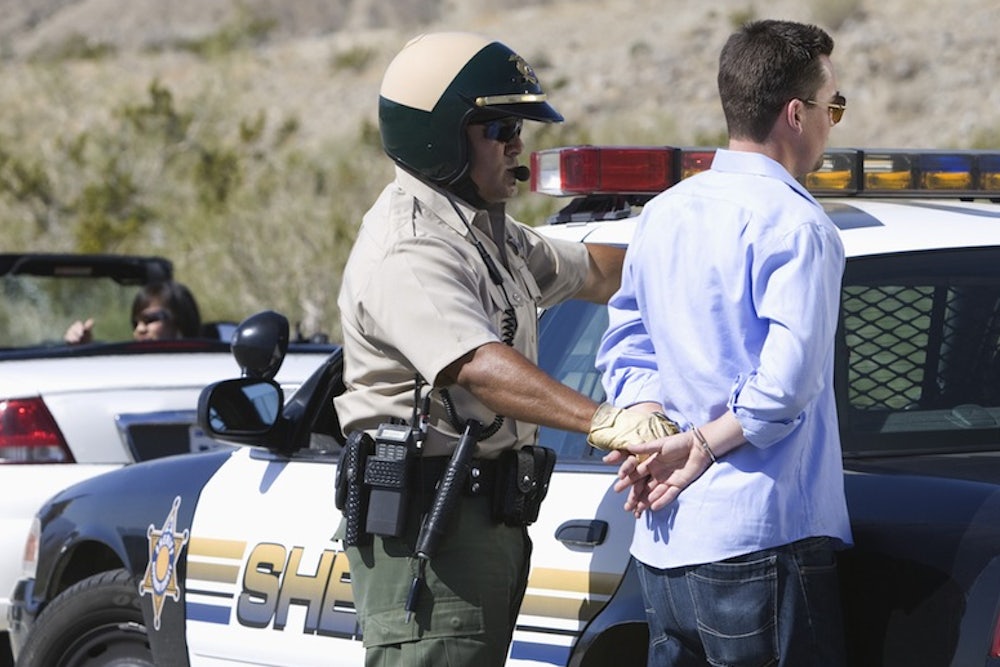Criminals and law enforcement compete in a constant arms race. Criminals develop new ways to transfer funds and communicate secretly, and police develop new ways to listen, trace, and track them. In the middle of this race stands an oft-bewildered referee, the Supreme Court, which must continually determine how to apply the Fourth Amendment, written in the 18th century, to an ever-changing technological context. Too often, these technological advances present the justices with a zero-sum game, where they must decide between the needs of law enforcement and robust protections of privacy. Today, the Supreme Court came down thunderously on the side of privacy.
Today’s landmark privacy decision came in a pair of cases, Riley v. California and US v. Wurie. Both cases concerned the police’s authority to search an arrestee’s cellphone—not because the police had a warrant for the search, but simply because he had his phone with him when they nabbed him. At issue was a question that is downright metaphysical: Is your cellphone more like your pocket or more like your bedroom?
For years, it has been firmly established that the police can search and seize items from the body and immediate vicinity of an arrested person. Under the Court’s Robinson decision, the basis for those searches is really two-fold: On the one-hand, there is strong and legitimate government interest in searching this area. After all, the arrestee might have a gun lying next to him, or he might quickly swallow some important document. And at the same time, there is a compounding factor: lowered privacy interests. Once you’re being cuffed, manhandled, and hauled off to jail, the marginal damage to privacy that comes with taking things from your pocket just seems negligible. These considerations lead to a bright line rule permitting these sorts of searches, called “searches incident to arrest.” So if the Court had taken this approach with cellphones as well, arrests would have allowed the police carte blanche to search a great deal of private information. Arrested for trespassing and happen to be carrying your cellphone? Police get to search your email!
But with cellphone contents, both bases of this rule are significantly undermined. Digital content doesn’t usually pose a danger to police, and once a physical phone has been taken from an arrestee, it’s hard to imagine how an arrestee could destroy its contents before law enforcement gets a warrant to search it. (Although the solicitor general valiantly tried to argue that encryption and remote wiping presented a similar danger, the Court found real-world evidence for these to be “anecdotal” and “limited.”) What’s more, the marginal harm to privacy that accompanies a cellphone search is enormous. While inspecting an arrestee’s pockets after cuffing him seems inconsequential, digging through his phone for his bank statements, text messages and his Facebook inbox does not. As Chief Justice John Roberts wrote in his overwhelming eight-justice majority opinion, comparing the two cases is like claiming that “a ride on horseback is materially indistinguishable from a flight to the moon.” With the rationale for permitting searches incident to arrest seemingly absent in the digital context, privacy activists urged the Court to treat cellphone content like any private location outside an arrestee’s immediate vicinity. In essence, they asked the Court to treat a cellphone like a bedroom. And that is precisely what the Court did today.
But to many of us who have been following the case, the ruling was a surprise. As I walked out of oral arguments a few weeks ago, the consensus seemed to be that the Court was seeking a middle ground. After all, police have come to rely on searches incident to arrest not just for their own safety or prevent destruction of evidence, but as an important early step in the investigative process. Routinely, evidence that is turned up during arrests for minor, unrelated charges allows for key breaks in larger cases. And this Court is often sensitive to the needs of the police, as in a recent ruling allowing DNA to be taken from arrestees, where Justice Stephen Breyer joined with conservatives to support law enforcement. But although the justices repeatedly toyed with the idea of crafting a principle that would allow continued searches without making an entire phone’s contents fair game, all nine justices ultimately found suggested approaches to be unworkable and “no practical limit at all.” The proposed middle ground, the Court found, would open a hole that only “particularly inexperienced or unimaginative” officer would fail to drive a truck through. Unable to find a middle ground, the Court ruled solidly on the side of privacy: from now on, all searches of cellphone will require warrants, even those found on arrestees.
Ultimately, the Court realized that the quantity, scope, and comprehensive nature of a cellphone’s digital content made these cases fundamentally different from previous searches incident to arrest. The sort of data accessible from a cellphone gives observers an unprecedented view into the private life of its owner. In recognizing that fact, the Supreme Court undoubtedly made the right call. But the Court’s decision also, I think, reflects an understanding that technology has simultaneously improved law enforcement’s ability to meet the challenge it has just given them. After all, the Court did not prohibit the searches of cellphones, it simply demanded that law enforcement receive prior permission from a judge. And in the age of rapid communication, is that really so much to ask?
Image via Shutterstock.
